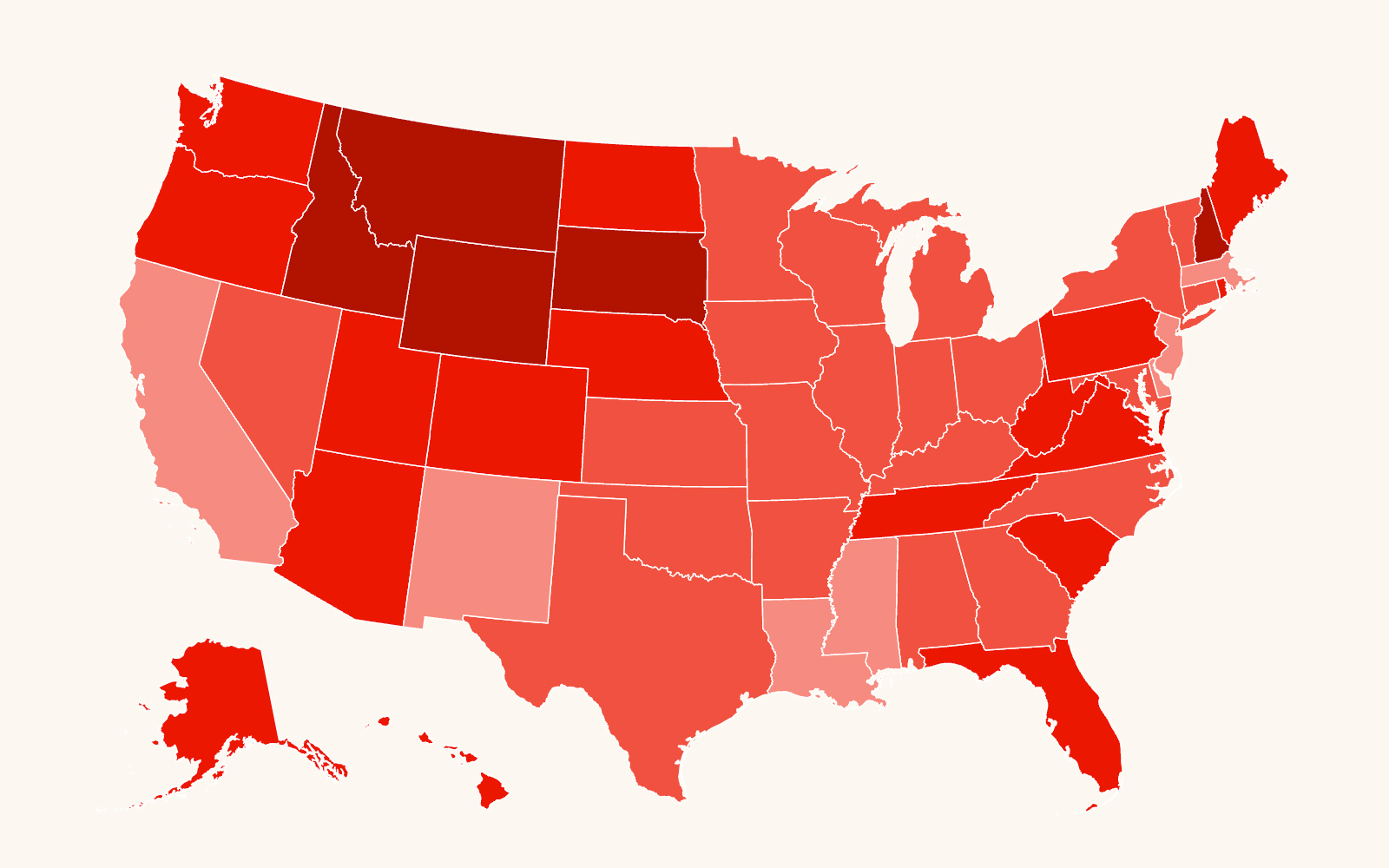In this article
- Which executive actions freeze federal funding and what do they do?
- Demand legislators reject trillions in tax cuts to billionaires and cuts to our social safety net
- What is the current status of the legal challenges to these actions freezing federal funding?
- Are the Trump Administration’s funding actions constitutional?
- How are Americans harmed by these executive actions that freeze federal funding — especially in the Deep South?
Several executive orders that President Trump signed would cause great harm to individuals as well as our democratic institutions. Trump’s executive orders are attempting to dismantle the federal government and threatening to cut off access to federal funding and programs for everyday people. The Trump administration also instituted a government-wide freeze on distributing federal grants, loans and other financial assistance. While the memorandum implementing the funding freeze was quickly blocked by the courts and then rescinded, the administration’s plans to cut and stop funding remain.
Which executive actions freeze federal funding and what do they do?
President Trump issued seven day-one executive orders that undermined the rights of marginalized communities and included language that wholesale blocked, rescinded and terminated federal funding relating to undocumented immigrants; diversity, equity and inclusion; green energy projects; foreign aid; and support for gender affirming care and abortion.[1] These executive orders were focused on terminating federal funding for these policies. To do so, they directed agencies to pause existing contracts; review and terminate contracts deemed to be considered fraud, waste or abuse; and initiate clawback or recoupment procedures. On Jan. 21, 2025, the Trump administration’s Office of Management and Budget issued memo M-25-11 to pause all green energy disbursements. The Jan. 27, 2025, memo M-25-13 (“Federal Funding Freeze Memo”) implemented the federal funding executive orders and placed a government-wide temporary pause for distributing grants, loans and other financial assistance on the related subjects. President Trump’s executive order titled “Implementing the President’s Department of Government Efficiency Initiative” required agencies to review all contracting policies, procedures and personnel; prepare guidance on efficiency; stop new awards; and expanded DOGE’s authorities to examine, cut or modify federal spending across agencies.
Demand legislators reject trillions in tax cuts to billionaires and cuts to our social safety net
Trump and Republicans are proposing a federal budget with massive tax cuts for corporations and the wealthy — at our expense. Members of Congress will soon vote on a budget.

What is the current status of the legal challenges to these actions freezing federal funding?
Several lawsuits are underway challenging these executive actions that terminate federal funding. Because the executive orders violate various laws, including the Administrative Procedure Act and the U.S. Constitution’s separation of powers and spending clause, two federal courts have temporarily prohibited the administration from unilaterally freezing federal funds. While the federal funding executive orders and actions continue to be challenged in the court, the Trump administration has stated its intention to disregard various legal requirements and court orders and has continued to rescind and reevaluate existing funding. As a result, the status of all contracts, grants and federal funding for existing and new awards continues to be in limbo. It is unclear when the fight over federal funding will be resolved.
Are the Trump Administration’s funding actions constitutional?
The Trump administration is likely in violation of the constitutional separation of powers. The separation of powers is the constitutional principle that the United States government has three co-equal branches; to ensure the balance of power, each branch has distinct responsibilities and authorities. The legislative branch is responsible for enacting laws and appropriating federal funding to operate the government. The executive branch implements and administers these laws and policies. The judicial branch interprets the Constitution and laws.
The Constitution clearly gives the legislative branch the “power of the purse” and the sole authority to decide what federal funds can be spent on and how much the executive branch can spend. The president cannot unilaterally stop distributing congressionally allocated funding because most federal spending statutes require executive agencies to spend all the funds Congress has appropriated for a specific activity. While the Impoundment Control Act of 1974 gives the president limited authority to temporarily withhold congressionally approved funding, it does not allow President Trump to unilaterally cut off funding. Instead, the Impoundment Control Act requires a president to follow certain procedures, including a formal request to Congress and for the House and Senate to then pass a bill agreeing to rescind funding. Instead, the administration disregarded the court order that temporarily blocked the federal funding freeze, claiming that its actions are a legitimate executive power.
How are Americans harmed by these executive actions that freeze federal funding — especially in the Deep South?
The Trump administration’s efforts to halt federal funding have huge impacts on all publicly funded programs and services. States, localities and nonprofits rely upon federal funds to pay for critical services and programs. In our Deep South states, federal funds account for a significant percentage of the state budget. For example, the state of Alabama received more than $14.5 billion last year to pay for Medicaid, Head Start, school meals, Pell grants and housing vouchers.[2] Nonprofits that provide direct services to individuals in need rely heavily on federal funding. For example, 37% of funding for Meals on Wheels, which provides food and social connection to 2.2 million vulnerable seniors, is from the federal government. While the federal-freeze memo was rescinded, funding has not been restored; instead, direct service organizations and individuals have reported that previously promised funds and grants are no longer available. Furthermore, various federal funding opportunities and offices have abruptly closed because of the confusing and far-reaching implications of the federal funding executive orders and staffing cuts inside the federal agencies themselves.
The SPLC is fighting to ensure that these vital programs are fully funded. The SPLC will push Congress to reject proposals that cut health care and food programs for the people with the lowest incomes.
For more information, please contact Theresa Lau.
Image at top: President Donald Trump arrives Jan. 30 at the Brady Press Briefing Room at the White House in Washington, D.C., to speak about the Jan. 29 mid-air crash in Washington between American Airlines flight 5342 and a military helicopter.
(Credit: Oliver Contreras/AFP via Getty Images)
[1] EO 14169, “Protecting the American People Against Invasion” (“Blocking Foreign Assistance”), among other actions attacking immigrant communities, directed a funding pause to audit grants, contracts, and other agreements with nonprofits that are supporting undocumented immigrants. EO 14151, “Ending Radical and Wasteful Government DEI Programs and Preferencing” (“Halting DEI”), eliminated all DEI programs and “equity-related” grants and contracts. EO 14154, “Unleashing American Energy,” paused disbursement of the Inflation Reduction Act and the Infrastructure Investment and Jobs Act grants and loans for green energy projects. EO 14168, “Defending Women from Gender Ideology Extremism and Restoring Biological Truth to the Federal Government,” erased protections for transgender people and ceased all funding for gender affirming care and “promotion of gender ideology.” EO 14169, “Reevaluating and Realigning United States Foreign Aid,” paused U.S. foreign development assistance. EO 14182, “Enforcing the Hyde Amendment,” rescinded Biden administration executive orders that expanded access to reproductive health care and reaffirmed that prohibition on using tax dollars to pay for abortion-related services and programs.



